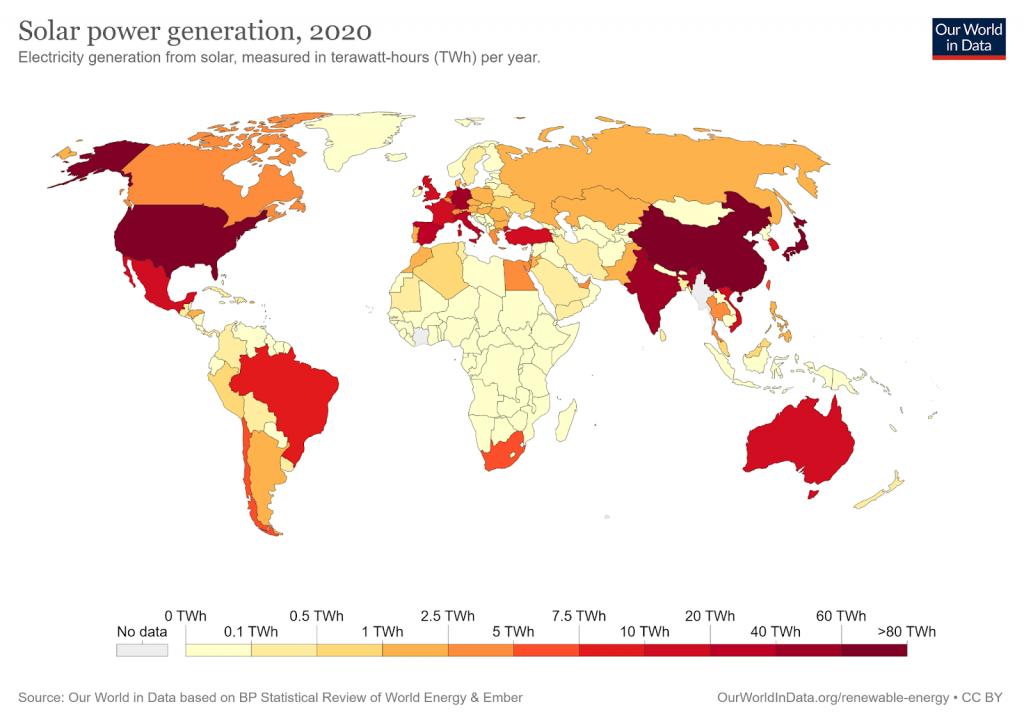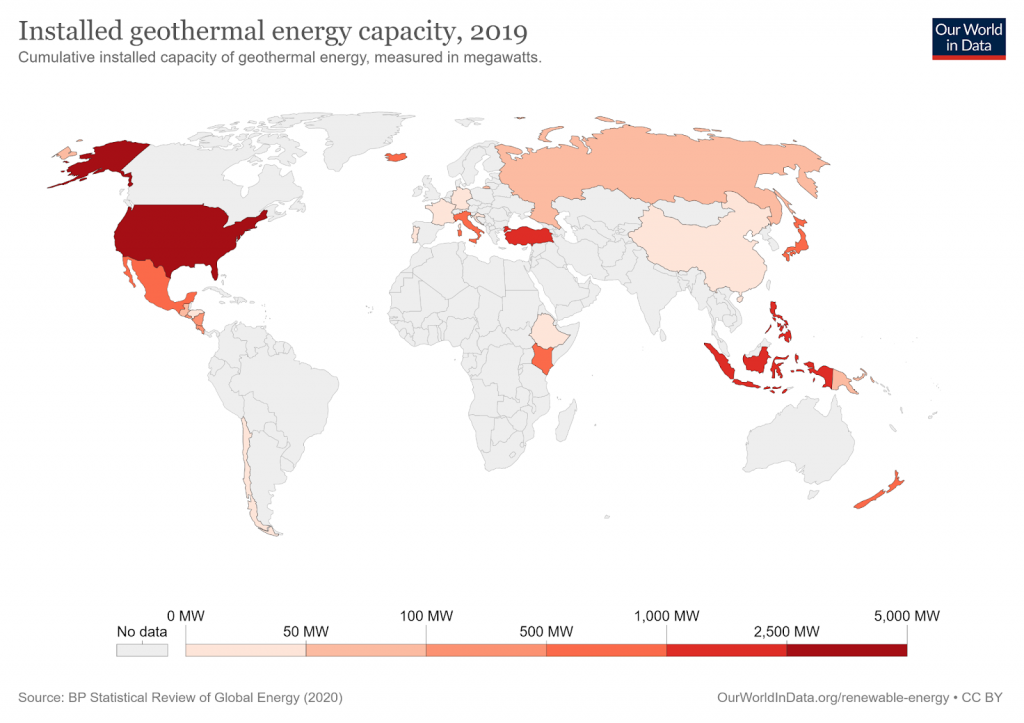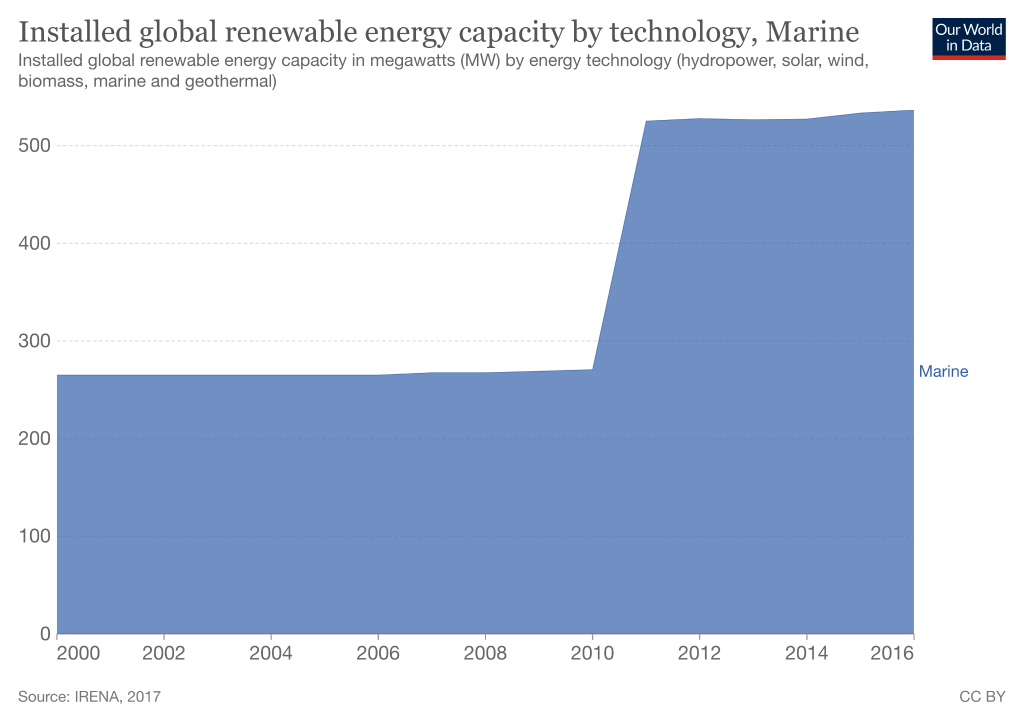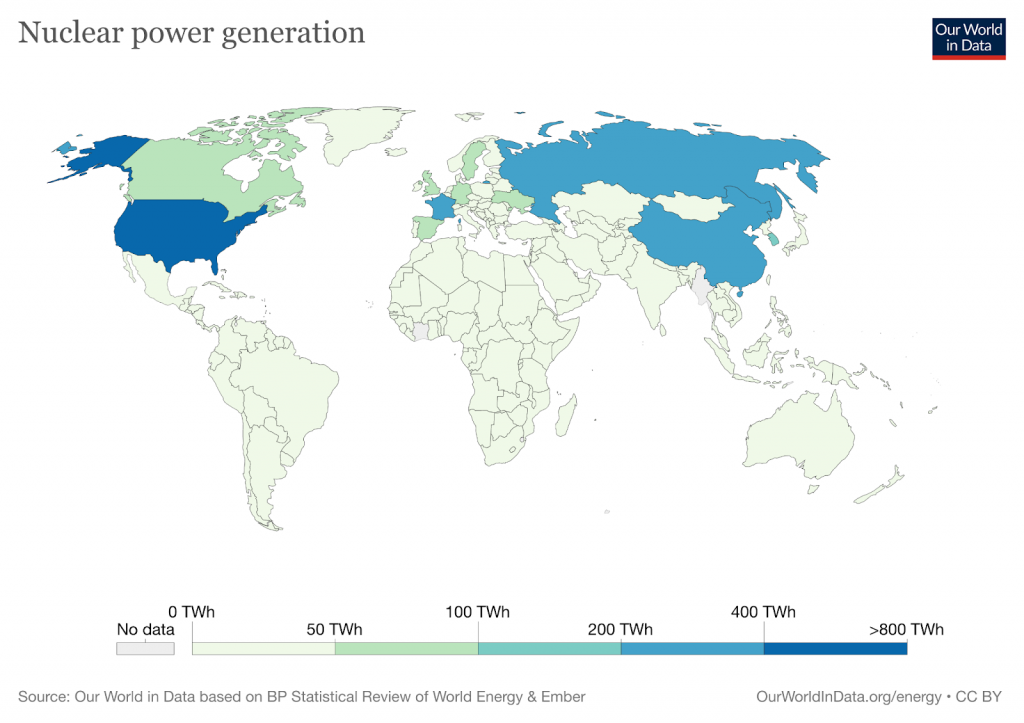What Is the Carbon Footprint of Alternative Energy? A Life-Cycle Assessment
Impactful Ninja is reader-supported. When you buy through links on our site, we may earn an affiliate commission.
Learn more
Learn more
.
Hey fellow impactful ninja ? You may have noticed that Impactful Ninja is all about providing helpful information to make a positive impact on the world and society. And that we love to link back to where we found all the information for each of our posts. Most of these links are informational-based for you to check out their primary sources with one click. But some of these links are so-called "affiliate links" to products that we recommend. First and foremost, because we believe that they add value to you. For example, when we wrote a post about the environmental impact of long showers, we came across an EPA recommendation to use WaterSense showerheads. So we linked to where you can find them. Or, for many of our posts, we also link to our favorite books on that topic so that you can get a much more holistic overview than one single blog post could provide. And when there is an affiliate program for these products, we sign up for it. For example, as Amazon Associates, we earn from qualifying purchases. First, and most importantly, we still only recommend products that we believe add value for you. When you buy something through one of our affiliate links, we may earn a small commission - but at no additional costs to you. And when you buy something through a link that is not an affiliate link, we won’t receive any commission but we’ll still be happy to have helped you. When we find products that we believe add value to you and the seller has an affiliate program, we sign up for it. When you buy something through one of our affiliate links, we may earn a small commission (at no extra costs to you). And at this point in time, all money is reinvested in sharing the most helpful content with you. This includes all operating costs for running this site and the content creation itself. You may have noticed by the way Impactful Ninja is operated that money is not the driving factor behind it. It is a passion project of mine and I love to share helpful information with you to make a positive impact on the world and society. However, it's a project in that I invest a lot of time and also quite some money. Eventually, my dream is to one day turn this passion project into my full-time job and provide even more helpful information. But that's still a long time to go. Stay impactful,Affiliate Disclosure
Why do we add these product links?
What do these affiliate links mean for you?
What do these affiliate links mean for us?
What does this mean for me personally?
![]()
Alternative energy is the generation of energy from sources that do not produce greenhouse gas emissions or harm the environment, which in turn reduces the effects of global warming. So we had to ask: What is the carbon footprint of alternative energy?
Per kWh produced, alternative energy emits between 12 and 48 gCO2 on a life-cycle basis. All types of alternative energy (solar, geothermal, wave, and nuclear) combat climate change, do not produce greenhouse gas emissions, and do not harm the environment.
Alternative energies play a vital role in combating climate change because of their virtually non-existent levels of CO2 emissions and because they do not harm the environment. Keep reading to learn about the overall carbon footprint of alternative energy, its carbon footprint throughout its life-cycle, and its environmental impact.
Here’s How We Assessed the Carbon Footprint of Sustainable Energy
The carbon footprint is one of the ways we measure the effects of human-induced global climate change. It primarily focuses on the GHG emissions associated with consumption, but also includes other emissions such as methane (CH4), nitrous oxide, and chlorofluorocarbons.
“Carbon footprint: the amount of greenhouse gases and specifically carbon dioxide emitted by something (such as a person’s activities or a product’s manufacture and transport) during a given period”
Merriam Webster
Basically, it is the amount of carbon emitted by an activity or an organization. This includes GHG emissions from fuel that we burn directly (e.g., heating a home, driving a car) and GHG emissions from manufacturing the products that we use (e.g., power plants, factories, and landfills).
Alternative energy is an energy substitute for fossil fuels (e.g., coal, oil, natural gas) that can reduce the effects of global warming. It does not produce greenhouse gas emissions (GHGs) or negatively impact the environment, making it both sustainable and environmentally friendly.
“Alternative Energy: electricity or power that is produced from the sun, wind, water, etc. in ways that do not use up the earth’s natural resources or harm the environment”
Oxford Dictionary
Alternative energy does not produce greenhouse gas emissions, is non-polluting, and does not harm the environment. But it may have intermittent energy production, geographic limitations, and nuclear waste byproducts.
The 4 most common types of alternative energy are: solar, geothermal, wave, and nuclear energy. They are all defined as alternative energies because no greenhouse gases are emitted during their operation and they do not negatively impact the environment.
To understand the carbon footprint of all energy types, we must assess their life-cycle and each stage’s carbon footprint. This life-cycle assessment (LCA) is a method to evaluate the environmental impacts of products and materials. Over the years, companies have strategically used LCA to research and create more sustainable products. So, we had a look at the LCA for all of the alternative energy types! (No worries, we’ll link back to each throughout this article.)
This Is the Carbon Footprint of All 6 Types of Sustainable Energy
When discussing the carbon footprint of certain energy types, we must take into account carbon emissions across the energy’s building, operating, and building back phases.
On a life-cycle basis, the carbon footprint of green energy ranges anywhere from 12 to 48 grams of CO2 equivalent per kWh (gCO2/KWh) of electricity produced.
| Type of alternative energy | Carbon footprint |
| Solar | Concentrated: 38 gCO2/KWhPV Roof: 41 gCO2/KWhPV Utility: 48 gCO2/KWh |
| Geothermal | 38 gCO2/KWh |
| Wave | Relatively low, but more research is needed |
| Nuclear | 12 gCO2/KWh |
Have a look at the illustration below to compare the average life-cycle CO2 equivalent emissions from alternative energies to those of different types of energy.

Each alternative energy has a different market outlook as well as installed capacity:
- Solar: Enough sunlight strikes the surface of the earth in an hour and a half to account for the world’s energy consumption in a year. Global solar energy demand has grown exponentially in the past decade, increasing from 51 GW in 2015 to 127 GW in 2020.
- Geothermal: The potential electricity generation for geothermal is 240 GW, with lower and upper limits of 50 GW and 1000-2000 GW, respectively. Geothermal energy accounted for 0.3% of global electricity generation in 2016, with an installed capacity of 12.7 gigawatts (GW) producing 80.9 terawatt-hours (TWh). By 2021, the global geothermal industry is expected to reach approximately 18.4 GW.
- Wave: The global installed capacity of marine technology increased from 265 to 536 megawatts (MW) between 2000 and 2016. There are roughly 3,000 GW of energy stored in the world’s tides, and the market for wave energy is expected to reach $141 million by 2027.
- Nuclear: Nuclear power makes up 10% of global energy generation. Globally there are 440 nuclear reactors with a total output capacity of 390,000 megawatts (MWe) located in 30 countries. 50 more reactors are under construction and over 100 are planned. In 2020, the world collectively generated roughly 10%, or over 2,500 terawatt-hours (TWh), of its electricity from nuclear energy.
Because alternative energy has climate reduction benefits and does not harm the environment, it is important to understand what its carbon footprint is. And how its carbon emissions affect the global climate change process.
Solar Energy Emits Between 38 and 48 Grams of CO2/kWh on a Life-Cycle Basis
Solar energy is the conversion of sunlight into electrical energy either through the use of photovoltaic (PV) panels or solar radiation concentrating mirrors. The energy produced is then used to generate electricity or can be stored in batteries or thermal storage for use at a later time.
“Solar Energy: energy that uses the power of the sun to produce electricity”
Cambridge Dictionary
Solar energy has the fifth-lowest carbon footprint. On a life-cycle basis, concentrated solar emits 38, PV roof solar emits 41, and PV utility solar energy emits 48 grams of CO2 equivalent per kWh of electricity produced.

Harnessing the power of the sun falls into two main categories:
- Photovoltaic (PV) solar cells: photovoltaic cells in solar panels absorb energy from sunlight, creating an electrical charge. This charge moves in response to an internal electric field in the cell, causing electricity to flow.
- Concentrating solar thermal plants (CSP): mirrors reflect and concentrate sunlight onto receivers that collect and convert solar energy into heat. This is utilized in very large power plants.
Here are the life-cycle stages of solar energy and each stage’s carbon footprint:
- Building of solar energy: CO2 emissions from the construction of solar power plants and electricity delivery mechanism
- Operating of solar energy: Little to no CO2 emissions or waste products
- Building back of solar energy: CO2 emissions from decommissioning the solar farms and land restoration
Enough sunlight strikes the surface of the earth in an hour and a half to account for the world’s energy consumption in a year. Because solar energy has such a large electricity generation potential, it is important to understand what its carbon footprint is. And how its carbon emissions affect the global climate change process.
Geothermal Energy Emits 38 Grams of CO2/kWh on a Life-Cycle Basis
The decay of radioactive materials in the rock and fluid of the earth’s core produces geothermal energy. Drilling down to hot water reservoirs up to a mile below the surface creates steam that rotates a turbine, which spins a generator to generate electricity. Geothermal is found along major tectonic plate boundaries where volcanoes are located. Because the Earth has an almost unlimited supply of heat generated by its core, and the water extracted from the reservoirs can be recycled via re-injection into the ground, it is a renewable energy source.
“Geothermal: involving or produced by the heat that is inside the earth”
Cambridge Dictionary
Geothermal energy has the fifth-lowest carbon footprint of all energy types. Per kWh produced, geothermal energy emits 38 grams of CO2 on a life-cycle basis.

The three main types of geothermal power plants are:
- Dry steam: Wells are drilled into underground reservoirs of steam. The steam is piped directly from the well to the power plant where it powers turbines and generators.
- Flash steam: The most common type of geothermal power plant. Very hot (360 degrees Fahrenheit, 182 degrees Celsius) water flows up through wells towards the surface under its own pressure. As it reaches the surface, some of the water boils into steam. The steam is then separated from the water and is then used to power turbines and generators at the power plant.
- Binary steam: Wells are drilled into underground reservoirs of hot water (225-360 degrees Fahrenheit, 107-182 degrees Celsius). The heat from the water is used to boil a working fluid, an organic compound with a low boiling point. This working fluid is vaporized into steam which is then used to power turbines and generators at the power plant. The water is then injected back into the ground where it is reheated and can be used again.
Here are the life-cycle stages of geothermal energy and each stage’s carbon footprint:
- Building of geothermal energy: CO2 emissions from drilling geothermal wells and construction of geothermal power plants
- Operating of geothermal energy: CO2 emissions from the operation of geothermal power plants
- Building back of geothermal energy: Little to no CO2 emissions or waste products
The potential electricity generation for geothermal is 240 GW, with lower and upper limits of 50 GW and 1000-2000 GW, respectively. Because geothermal energy has a large electricity generation potential – and production has steadily increased in the last decade – it is important to understand what its carbon footprint is. And how its carbon emissions affect the global climate change process.
Wave Energy Has One of the Lowest Carbon Footprints, but More Research Is Needed to Determine Exactly How Low It Is
Waves are formed when the wind blows over the surface of the water on oceans or lakes. 95% of the wave’s energy is stored between the surface of the water and the top 1/4th of the wave’s length. To produce wave energy, float/buoy, oscillating water columns, and tapered channel systems use the rise and fall of waves to produce electricity.
“Wave Power: electrical energy generated by harnessing the up-and-down motion of ocean waves”
Britannica
Wave energy has a low carbon footprint. Wave energy emits similarly low levels of CO2 compared to tidal energy, although more research is still needed.

There are three types of wave energy technology:
- Float or buoy: Anchored buoys use the rise and fall of waves to power hydraulic pumps. The “up” and “down” movement powers a generator to produce electricity, which is transported onshore via underwater power cables.
- Oscillating water column: The “in” and “out” motion of waves at the shore enter columns, forcing air to turn turbines. As the waves enter the column, the air is compressed and heated, creating energy. The energy is then transported onshore via underwater power cables.
- Tapered channel (Tapchan): Shore mounted structures channel and concentrate waves, pushing them into an elevated reservoir. The water is then released from the reservoir, flowing through penstocks and to turbines which power a generator to produce electricity.
Here are the life-cycle stages of wave energy and each stage’s carbon footprint:
- Building of wave energy: CO2 emissions from construction and transportation of materials
- Operating of wave energy: Little to no CO2 emissions or waste products
- Building back of wave energy: More research is needed
The market for wave energy is expected to reach $141 million by 2027. Because the generating potential for wave energy is so high, it is important to understand what its carbon footprint is. And how its carbon emissions affect the global climate change process.
Nuclear Energy Has the Second-Lowest Carbon Footprint at 12 grams of CO2/kWh on a Life-Cycle Basis
When it comes to nuclear energy, we need to start with atoms. All matter consists of atoms, each of which contains a nucleus. When a neutron strikes the nucleus of an atom, the atomic center can break apart into pieces, thereby releasing energy in the form of radiation and heat. This energy heats water, produces steam that spins a turbine, and drives generators to produce electricity.
“Nuclear Power: the power produced when the nucleus (= central part) of an atom is divided or joined to another nucleus”
Cambridge Dictionary
Nuclear energy has the second-lowest carbon footprint of all energy types. Per kWh produced, nuclear energy emits 12 grams of CO2 on a life-cycle basis. It combats climate change and has various environmental benefits, but comes with the threat of nuclear waste products.

There are two ways to generate nuclear energy:
- Nuclear Fusion: Atoms are combined or fused to create larger atoms. The sun and stars get their energy from nuclear fusion, but the process is very hard to control within a laboratory setting. Future research needs to be done to determine if this could be another viable energy source.
- Nuclear Fission: Electromagnetic radiation is used to split the nucleus of a uranium atom, which releases an enormous amount of energy. All operating nuclear power plants today use the process of nuclear fission.
The Uranium isotope used in nuclear fission is Uranium-235 (U-235) because its atoms are easily split apart in nuclear reactors. U-235 has a concentration of 2.8 parts per million (0.7% abundance) in Earth’s crust. Although it can be found almost everywhere supplies of U-235 are finite, and we have already used up most of it because it has a half-life of about 700 million years.
Here are the life-cycle stages of nuclear energy and each stage’s carbon footprint:
- Building of nuclear energy: Some CO2 emissions from constructing the nuclear power plant, mining and processing uranium, transporting nuclear fuel to the power plant
- Operating of nuclear energy: Little to no CO2 emissions during operation
- Building back of nuclear energy: Some CO2 emissions from transporting used fuel/radioactive material and decommissioning the power plant
Globally there are 440 nuclear reactors with a total output capacity of 390,000 megawatts (MWe) located in 30 countries. Nuclear energy makes up 10% of global energy generation. Because it is often described as an efficient, safe, and clean energy substitute for fossil fuels, understanding nuclear energy’s carbon footprint and how its carbon emissions affect the global climate change process is important.
What Role Does Alternative Energy Play in Combating Climate Change
Fossil fuel combustion is the main contributor to atmospheric CO2 levels. Climate Change occurs when CO2 and other air pollutants absorb sunlight and solar radiation in the atmosphere, trapping the heat and acting as an insulator for the planet. Since the Industrial Revolution, Earth’s temperature has risen a little more than 1 degree Celsius (C), or 2 degrees Fahrenheit (F). The current global annual temperature rise is 0.18C, or 0.32F, for every 10 years.
Using alternative energy (solar, geothermal, wave, and nuclear), instead of fossil fuel energy helps mitigate the following negative effects of climate change:
- Increasing temperatures: Earth’s atmosphere has warmed 1.5℃ since 1880. This may not seem like a lot, but these degrees create regional and seasonal temperature extremes, reduce sea ice, intensify rainfall and drought severity, and change habitat ranges for plants and animals.
- Rising sea levels: Global sea levels have increased approximately 8-9 inches since 1880, displacing people living along coastlines and destroying coastal habitats. Roads, bridges, subways, water supplies, oil and gas wells, power plants, sewage treatment plants, and landfills remain at risk if sea level rise goes unchecked.
- Melting of sea ice: Since 1979, arctic sea ice has declined by 30%. Sea ice plays a major role in regulating the earth’s climate by reflecting sunlight into space and providing habitat for animal species. If all of the glaciers on Earth melted, sea levels would rise by approximately 70 feet, effectively flooding out every coastal city on the planet.
- Changing precipitation patterns: Extreme weather events (e.g., hurricanes, floods, droughts) are becoming more common and more intense. Storm-affected areas will experience increased precipitation and flooding whereas areas located further from storm tracks will experience decreased precipitation and droughts.
- Ocean acidification: The ocean absorbs 30% of the CO2 released into the atmosphere, which decreases the pH (increases the acidity) of the ocean. In the past 200 years, the pH of oceans has decreased by 0.1 pH units, which translates to a 30% increase in acidity. Aquatic life unable to adjust to this rapid acidification will die off. A prime example of this is coral bleaching, where coral expel the algae (zooxanthellae) living in their tissues as a result of changes in temperature, light, or nutrients.
Experts claim that to avoid a future plagued by rising sea levels, acidified oceans, loss of biodiversity, more frequent and severe weather events, and other environmental disasters brought on by the hotter temperatures, we must limit global warming to 1.5C by 2040.
The more we reduce CO2 emissions, the more we slow the rate of temperature rise, sea-level rise, ice melting, and ocean acidification. When these rates are slowed, the earth’s biodiversity does not have to struggle to adapt to temperature and pH changes. People will not be displaced due to the flooding of coastal areas. And icebergs will continue to provide climate regulation.
How Environmentally Friendly Is Alternative Energy
The overall environmental friendliness of alternative energy depends on which specific type of energy is being discussed.
“Environmentally friendly: (of products) not harming the environment.”
Cambridge Dictionary
There are collective, as well as unique, benefits and drawbacks to alternative energy.
What Are Environmental Benefits of Alternative Energy
All 4 alternative energies have the following three benefits:
- Climate Change mitigation: Alternative energy has an average life-cycle CO2 equivalent emission value between 12 and 48 gCO2/KWh, which is much less than coal at 820g of CO2 equivalent per kWh. This reduction in CO2 emissions, in turn, reduces the effects of global climate change including increasing temperatures, rising sea levels, melting of sea ice, changing precipitation patterns, and ocean acidification.
- Energy independence: Being able to produce our own electricity in the US without the aid of foreign countries is an important step to help us become more self-sufficient. Former President George W. Bush signed the Energy Independence and Security Act of 2007 to reduce U.S. dependence on oil, expand the production of renewable fuels (and confront global climate change).
- Employment opportunities: The renewable energy sector collectively employed 11.5 million people worldwide in 2019. Renewable energy jobs continue to increase as we start to realize just how beneficial renewable energy is for our environment.
There are also specific benefits unique to each alternative energy type:
- Solar: Throughout its life cycle, concentrated solar energy produces 0.04%, PV roof solar energy produces 0.05%, and PV utility solar energy produces 0.06% of the CO2 emissions per unit of electricity than coal produces.
- Geothermal: Throughout its life cycle, geothermal energy produces 5% of the CO2 emissions per unit of electricity that coal produces. In the US alone, annual geothermal energy resources effectively offset the emission of 4.1 million metric tons (t) of CO2, 200,000 t of SO2, 80,000 t of nitrogen oxides, and 110,000 t of particulate matter when compared to conventional coal-fired plants.
- Wave: Tidal and wave energy together could help reduce global CO2 emissions from fossil fuel electricity generation by around 500 million tons by the year 2050.
- Nuclear: Nuclear power produces 0.02% of the CO2 emissions per unit of electricity that coal produces. In the US alone, nuclear power saves 471 million tonnes (519 million tons) of CO2 emissions that would have otherwise come from the combustion of fossil fuels. This is the equivalent of removing 100 million passenger vehicles from the roads. Nuclear fuel is also extremely dense. One U-235 pellet 1 inch tall is the equivalent of 1 ton of coal. And since 1 ton of coal creates 2.086 tons (4,172 lbs) of CO2 when it is burned, a 1-inch U-235 pellet directly avoids the emission of over 2 tons of CO2 from our atmosphere.
What Are Environmental Drawbacks of Alternative Energy
Each alternative energy type comes with its own set of environmental drawbacks that should be taken into account when discussing its carbon footprint.
- Solar: The scale of land degradation and habitat loss depends on the technology, site topography, and intensity of the solar resource. Siting large-scale solar farms on abandoned land and small-scale farms on top of buildings or homes can minimize negative environmental impacts. Water is used for the construction of PV components, and CSPs require water for cooling. Hydrochloric acid, sulfuric acid, nitric acid, hydrogen fluoride, 1,1,1-trichloroethane, and acetone are all used to manufacture PV cells. If not handled and disposed of properly, these hazardous materials could present a serious risk to environmental and public health.
- Geothermal: Geothermal reservoirs occur deep underground and are not detectable from the surface. Areas where geothermal does come to the surface are only found near tectonic plate boundaries. Also, high-pressure fluid injections close to neighboring fault lines have the potential to trigger earthquakes. 90% of all earthquakes occur in the Ring of Fire, an area that coincides with the highest concentration of geothermal resources.
- Wave: The main environmental concern with tidal and wave energy is the impact on aquatic wildlife. Construction and operation of marine energy technology may negatively impact estuarine ecosystems via underwater noise pollution, habitat changes, and wildlife collisions with turbines. Because tidal and wave energy is a relatively new technology, more research needs to be done to fully understand this environmental impact.
- Nuclear: The main environmental drawbacks associated with nuclear power are uranium mining and nuclear waste. Uranium mining contaminates the environment with radioactive dust, radon gas, water-borne toxins, and increased levels of background radiation. Exploratory drilling and mining also heavily increases the risk of water contamination. The waste that nuclear energy does produce is radioactive and can remain hazardous for many thousands of years. These radioactive waste products include uranium mill tailings, spent (used) reactor fuel, and other radioactive wastes Proper handling, transportation, storage, and disposal of radioactive waste can help ensure that it does not leach into the environment.
Final Thoughts
Alternative energies have gained traction since 2000 because they do not emit greenhouse gases and do not harm the environment. Because of this, they have a lower carbon footprint across their building, operating, and building back phases.
Alternative energies also create jobs and promote energy independence, making them environmentally friendly energy sources. Careful siting of power plants and proper disposal of nuclear waste byproducts can help mitigate environmental concerns. Alternative energies benefit both our atmosphere and Earth’s biota.
Stay impactful,

Sources
- New World Encyclopedia: Alternative Energy
- Impactful Ninja: What is the Carbon Footprint of Fossil Fuels?
- Impactful Ninja: What is the Carbon Footprint of Coal Energy?
- Impactful Ninja: What is the Carbon Footprint of Oil Energy?
- Impactful Ninja: What is the Carbon Footprint of Natural Gas?
- Impactful Ninja: What is the Carbon Footprint of Solar Energy?
- Impactful Ninja: What is the Carbon Footprint of Geothermal Energy?
- Impactful Ninja: What is the Carbon Footprint of Tidal and Wave Energy?
- Impactful Ninja: What is the Carbon Footprint of Nuclear Energy?
- Office of Energy Efficiency & Renewable Energy: How Does Solar Work?
- The National Renewable Energy Laboratory: Solar Photovoltaic Technology Basics
- Solar Energy Industries Association: Concentrating Solar Power
- TWI: What is Geothermal Energy? How Does it Work?
- National Renewable Energy Laboratory: Geothermal Electricity Production Basics
- U.S. Energy Information Administration: Hydropower Explained – Wave Power
- International Renewable Energy Agency: Wave Energy Technology Brief
- Ocean Energy Council: Wave Energy
- National Geographic: Non-Renewable Energy
- US Energy Information Administration: Nuclear Explained
- World Nuclear Association: Uranium Mining Overview Britannica: Carbon Footprint
- Statista: Demand of solar photovoltaic power globally from 2015 to 2019, with forecast until 2024
- Our World in Data: Renewable Energy Capacity by Technology (IRENA (2017)) megawatts (MW)
- Allied Market Research: Wave Energy Market Size, Share Analysis – 2027
- World Nuclear Association: What is Uranium? How Does it Work?
- United States Environmental Protection Agency: System of Registries
- World Nuclear Association: Average life-cycle CO2 equivalent emissions
- Science Direct: Life-cycle assessment (LCA)
- MIT SMR: Strategic Sustainability Uses of Life-Cycle Analysis
- Natural Resources Canada: Learn the facts: Fuel consumption and CO2
- International Renewable Energy Agency: Solar Energy Energy Education: Geothermal Power Plants
- Foro Nuclear: What are the different components of a nuclear power plant?
- McKinsey Sustainability: Climate risk and decarbonization – What every mining CEO needs to know
- World Nuclear Association: Nuclear Fuel Cycle Overview
- EnergySage: How long do solar panels last? Solar panel lifespan explained
- The National Renewable Energy Laboratory: Photovoltaic Degradation Rates — An Analytical Review
- Resources for the Future: Geothermal Energy 101
- Power Technology: Riding the renewable wave: tidal energy advantages and disadvantages
- Natural Resources Defense Council: Nuclear Power 101
- International Atomic Energy Agency: Nuclear power plant ageing and life extension: Safety aspects
- Union of Concerned Scientists: The Hidden Costs of Fossil Fuels
- National Resources Defense Council: Global Warming 101
- The National Wildlife Federation: Climate Change
- National Oceanic and Atmospheric Administration: Climate Change – Global Temperature
- National Oceanic and Atmospheric Administration: Climate Change – Global Sea Level
- United States Geological Survey: How would sea level change if all glaciers melted?
- National Aeronautics and Space Administration, U.S.A.: How does climate change affect precipitation?
- National Oceanic and Atmospheric Administration: Ocean Acidification
- National Ocean Service: What is coral bleaching?
- United Nations Framework Convention on Climate Change: The Paris Agreement
- US Environmental Protection Agency: Summary of the Energy Independence and Security Act
- White House Archives: Fact Sheet – Energy Independence and Security Act of 2007
- International Renewable Energy Agency: Renewable Energy Jobs Continue Growth to 11.5 Million Worldwide
- US Department of Energy Efficiency and Renewable Energy: Geothermal Technologies Program
- National Renewable Energy Laboratory: Buried Treasure – The Environmental, Economic, and Employment Benefits of Geothermal Energy
- U.S. Government Accountability Office: Science & Tech Spotlight – Renewable Ocean Energy
- The Nuclear Energy Institute: Climate Change
- Freeing Energy: How much CO2 and pollution comes from burning coal?
- The Nuclear Energy Institute: Nuclear Fuel
- Union of Concerned Scientists: Environmental Impacts of Solar Power
- US Energy Information Administration: Geothermal explained – Where geothermal energy is found
- Nature: South Korea accepts geothermal plant probably caused destructive quake
- United States Geological Survey: Earthquake Glossary – Ring of Fire
- Britannica: Tidal Power
- National Center for Biotechnology Information: Uranium mining and health
- US Energy Information Administration: Nuclear power and the environment




